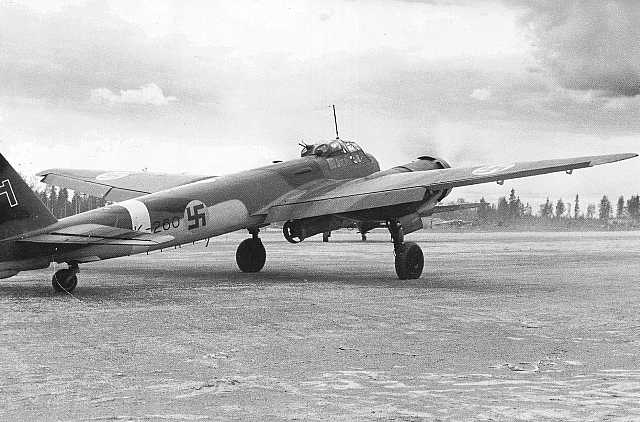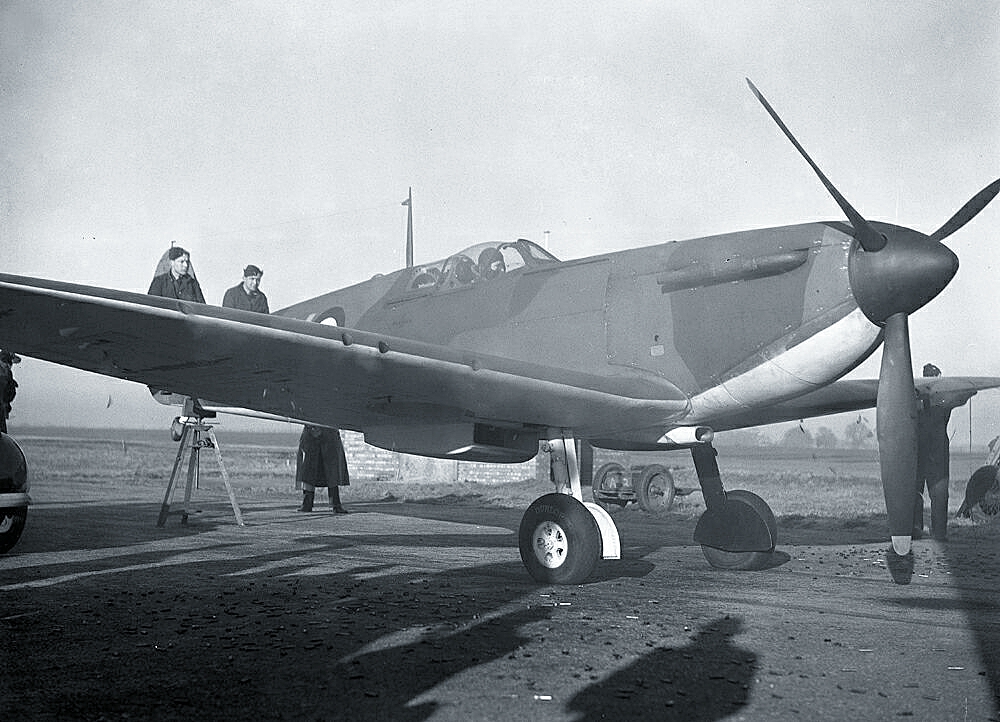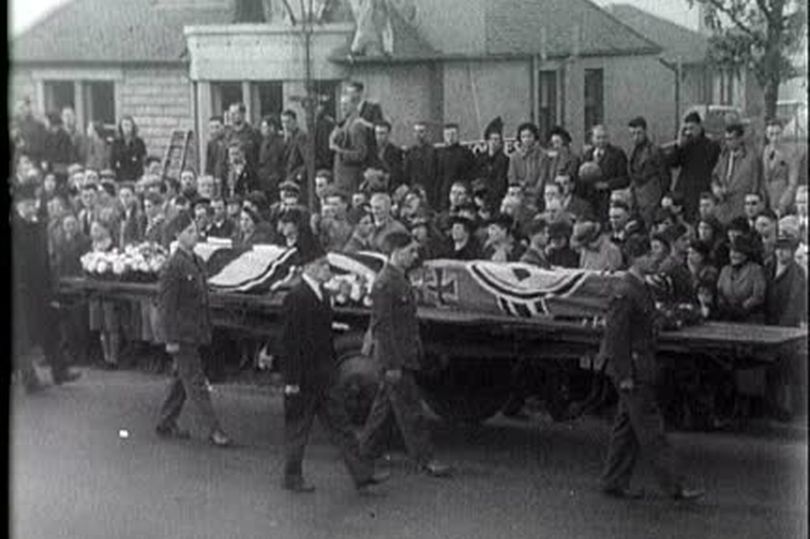- Author
- A.N. Other
- Subjects
- WWII operations
- Tags
-
- RAN Ships
- None noted.
- Publication
- March 2023 edition of the Naval Historical Review (all rights reserved)
By Carole Welch
One of our United Kingdom readers was recently going through some family mementoes and asked if we would be interested in this story emanating from the early days of WWII. While there is no Australian connection we are reminded of a similar incident in Sydney in June 1942 when full military honours were afforded to the crew of a Japanese midget submarine which had attacked shipping in Sydney Harbour.
Carole’s family connection is that her late father was one of two RAF pipers who accompanied the funeral cortege. The story taken from Scottish newspapers was recently rerun on a local website which reads along the following lines.
Earlier this month I spent a weekend much like any other during this past year and a half. Meandering around Edinburgh and exploring its many nooks and crannies, I found myself in Portobello1.
The first Luftwaffe air raid over Britain
While walking along the beach I recalled seeing peculiar photographs taken during the early days of the Second World War. Images of swastika-clad2 coffins being led down the main street, crowds gathered to pay their respects and servicemen marching in unison. Not exactly scenes one would expect to see in war-era Britain. Nonetheless, the images are authentic and provide a glimpse into the aftermath of the first Luftwaffe air raid over mainland Britain.
The Battle of the River Forth commenced on a bright Monday morning of 16 October 1939, which saw a dozenJunkers Ju-88 bombers prowl their way across the North Sea in broad daylight to target naval ships in the Forth estuary. Lying to the north west of Edinburgh, the port of Rosyth was a prime target for the Luftwaffe as the waters of the Forth were frequented by both naval and merchant vessels.

The targets had been picked with great care as intelligence had led the German command to believe the battlecruiser HMS Hood, the pride of the Royal Navy, was at Rosyth. Three Luftwaffe Heinkel He III reconnaissance aircraft had overflown the estuary earlier that day and reported the numbers of ships including Hood. But this intelligence was incorrect as the spotter planes had mistaken HMS Repulse for Hood. The pilots were under strict instructions to only attack naval ships and there were to be no civilian casualties. The enticing dockyards with Repulse alongside but with their civilian workforce were therefore not attacked.
The raid saw close calls for two Town-class cruisers, HMS Southampton and HMS Edinburgh, as well as HMS Mohawk, a Tribal-class destroyer. Also present in the Firth of Forth that day were the fleet aircraft carrier HMS Furiousand the destroyer HMS Jervis, and the battlecruiser Repulse, the latter of which had been docked in Rosyth for maintenance work.
The Luftwaffe aircraft all took off from Sylt, an island off the northern coast of Germany, at a distance of about 400 nautical miles or 750 km to their target. The Junkers JU-88 bombers each carried two 500 kg (1100 lb) bombs, the maximum load they could take given the distance to be covered.
The bombers flew in a formation of four waves each of three aircraft. Entering the skies over the River Forth in good conditions, the Ju-88s saw clear targets before them and commenced their attack. Southampton is recorded as having sustained light bomb damage and counted three casualties. Meanwhile, seven crew members from Edinburgh were injured alongside 25 of their comrades from Mohawk. Later reports of RN casualties tell of 16 killed and 44 wounded, including the captain of Mohawk (Commander Richard Jolly RN) who died of his wounds.
At first, it appeared the Luftwaffe squadron had caught British defences off-guard. Indeed, in the aftermath of the incident the response to this incursion was criticised as air raid sirens failed to sound in nearby population centres. However, both the reconnaissance aircraft and the raiding bombers were discovered by Range and Direction Finding (RDF) equipment (an early form of Radar) at RAF Dronehill which provided sufficient warning to scramble defending aircraft from the Royal Auxiliary Air Force (RAuxAF).

Countering the raid were RAuxAF Supermarine Spitfires Mk 1 from the City of Glasgow 602 Squadron but based at Drem in East Lothian, and the City of Edinburgh 603 Squadron from Turnhouse. The Spitfires pursued and engaged the Luftwaffe aircraft in a short but ferocious air battle in the skies above the Forth. Contemporary eye witness accounts describe frightening and intense scenes as Spitfires intercepted the JU-88s. These were the first enemy aircraft shot down by Spitfires.
The difference between the two opposing aircrews was significant. Both had new aircraft but many of the Junkers crews were veterans with experience from operations in Poland and Spain, whereas the Spitfire crews were mainly volunteer reservists unused to combat conditions.
Notably, as the raid began to unfold passengers aboard a train travelling across the Forth Rail Bridge were given a terrifying front row view. The responding RAuxAF fighters successfully repulsed the German aircraft, shooting down two and pursuing the remainder out toward the North Sea. One downed bomber landed in the waters off Prestonpans, where injured airmen were picked up and later handed over to local police – the first German aircraft of WWII shot-down over Britain. The injured airmen were well cared for and some ultimately finished up as prisoners of war in Canada.
Public reaction and sympathy
It was over Portobello that the final aircraft was harried and shot down, eventually crashing into the water. This was piloted by Hauptmann Helmuth Pohle: both he and Gunner Werner Weise were injured and Under Officer Kurt Seydel (aged 26) and Radio Operator August Schleicher (aged 22) died. The dead airmen were buried with full military honours on 21 October 1939. News reports from the time suggest up to 10,000 people lined the streets of Portobello to pay their respects and bagpipers from both RAuxAF squadrons involved in the raid accompanied the coffins with the pipers playing Over the Sea to Skye as a lament to the fallen.

The chaplain of 603 Squadron, Reverend James Rossie Brow, conducted the burial ceremony and later contacted the mothers of the crew members. A pair of wreaths laid on the graves bore the messages: ‘To two brave airmen from the mother of an airman’ and ‘With the deep sympathy of Scottish mothers’. In retrospect, this incident does appear strange given what we now know and what the swastika represents. However, one must remember the context in which this raid occurred.
This raid was carried out just weeks into the war, and it has been suggested that the public opinion toward German military personnel had not yet completely soured. This was the first incident of its kind since the outbreak of war, and many of the onlookers that day would likely have remembered the First World War and the horrors it inflicted upon families on both sides of the conflict.
Crucially, during the early stages of the Second World War, British civilians had not yet been subjected to the Luftwaffe’s devastating Blitz bombing campaigns, which saw terror and devastation unleashed upon towns and cities across Britain.
Luftwaffe operations in the skies above Britain initially focused on military targets, with shipping and industrial sites representing prime targets for German bombers. Similarly, situations akin to this also occurred elsewhere in the UK during those early days.
The Battle of the Forth, as the first occasion that the Luftwaffe had attacked Britain, was the subject of great interest and was widely reported throughout the world. In the early days of WWII this action was a huge wakeup call for the Royal Navy and demonstrated the capabilities of an inexperienced Royal Air Force.
Notes
Porto Bello in present day Panama, named by Columbus in 1502, became a trading centre between Europe and the Americas. Its fabulous wealth attracted pirates and adventurers. The fortress was captured by British Admiral Edward Vernon in 1739 when he became a popular hero with many places named after his victory, including an Edinburgh suburb.
The flags shown are German War Ensigns used from 1938 to 1945. These show the swastika superimposed on a black and white cross against a red background. Emblems associated with the Nazi Party such as the swastika were removed after the Allied victory in 1945.
References
Kelly, Ross & Farr, Jacob, Rambling History, edinburghlive, 30 November 2021. https://www.edinburghlive.co.uk/news/history/reason-10000-edinburgh-residents-lined-22324798
https://www.youtube.com/watch?v=0o1EKXj_6sU




